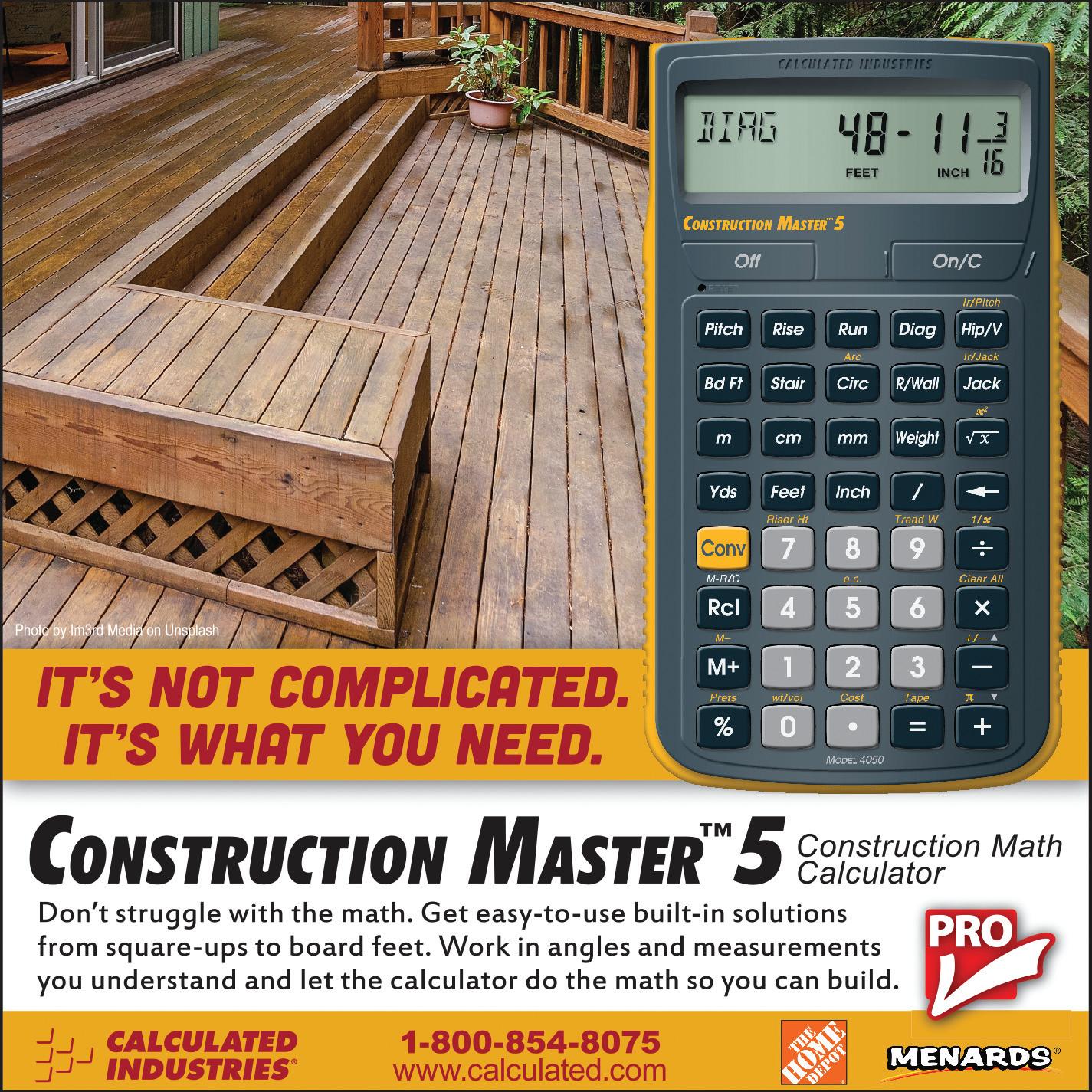
1 minute read
INSTALL A FLOATING MANTLE SHELF
The Hollow Shelf of the Faux Beam
The faux beam shelf is essentially a hollow box constructed of a 3/4-in. boards. The rear wall of the box is left open to slip over the interior mounting bracket. The example shelf shown in the photos is made from pine because the softwood lumber is easy to dent and ding for a distressed appearance, but if you want a more refined finish, then consider a hardwood species.
Decide the dimensions of your shelf and purchase materials accordingly, with the understanding that this design requires a shelf at least 3-1/2 inches thick to house the internal mounting bracket. The interior bracket should be built long enough to bridge at least two studs
(usually 16” on-center) for mounting the screws into solid wood. This means the hollow shelf should be built a minimum of 22 inches long to house the bracket.


Common dimensions for this type of shelf are 4x8, 4x10 and 6x10. First step is to cut all the 3/4-in. boards to their final length, then use the table saw to rip 45-degree bevels along all the mating edges.
To begin assembly, lay three or four parallel strips of painter’s tape on a flat, sturdy work surface. Arrange the three shelf boards edge-toedge lengthwise at right angles across the tape in preparation to fold them together. Lay the narrowest board between the two wider boards that will comprise the top and bottom panels of the shelf box. Press the tape in place for a better bond to the wood.

The beveled joints comprise the edges of the box, and it’s a good idea to use a marker to color the inside edges the same tone as the stain you plan to apply to the outside of the shelf. This will help disguise the assembled edges to look like solid wood.

Apply a liberal amount of wood glue to the beveled board edges to strengthen all the wood joints.

Before folding the shelves together for assembly, insert a couple of wood blocks to help support the inside of the boards and maintain the box shape. Carefully fold the three boards together over the blocks. Some separation will happen along the seams, but wood clamps can help keep the seams together and hold the box square. Once the seams are aligned, carefully drive 2-in. brad nails through the right-angle edge joints, spacing them about 6 inches apart. Drive the brads through the top and bottom panels into the narrow board, then drive brads through the center board into the larger panels.


The end panels are cut and beveled to fit inside the hollows at the ends of the box. Glue and nail each end panel into place.
After the glue has dried, finish the exterior of the shelf for your desired appearance.










